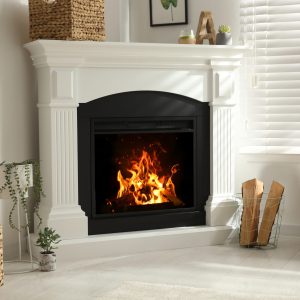Installing an indoor fireplace is a significant addition to your home, offering both warmth and ambiance. To ensure a successful installation, it’s vital to consider several important factors:
- Type of Fireplace: Each type of fireplace has its benefits and requirements. Wood-burning fireplaces offer a traditional feel but require a chimney and regular cleaning to prevent soot and creosote buildup. Gas fireplaces are easier to maintain and can be vented through a wall, while electric fireplaces are the simplest to install, requiring no venting but only offering aesthetic flames.
- Energy Efficiency: Consider the efficiency of the fireplace you choose. Gas and electric fireplaces are generally more energy-efficient compared to traditional wood-burning ones.
- Location and Space: The placement of your fireplace is crucial. It should be installed in a location that allows for effective distribution of heat while complementing the room’s layout. Ensure there’s enough space around the fireplace for safety and functionality.
- Safety Precautions: Safety is paramount. This includes installing a sturdy fireguard to prevent sparks or embers from escaping, ensuring there’s adequate clearance around the fireplace, and installing smoke and carbon monoxide detectors.
- Ventilation: Proper ventilation is essential, especially for wood-burning and gas fireplaces, to ensure harmful gases are expelled from the home.
- Building Codes and Permits: Adherence to local building codes and obtaining necessary permits is critical. These regulations are in place to ensure safe installation and operation of the fireplace.
- Maintenance and Upkeep: Regular maintenance is key to the safe operation of a fireplace. This includes annual inspections, cleaning of chimneys and vents, and checking for any wear or damage.
- Aesthetic and Design: Consider how the fireplace will fit into the overall aesthetic of your home. The design should complement your home’s style while also serving as a focal point.
- Professional Installation: Utilizing the expertise of professionals like Bright Habitats ensures that your fireplace installation adheres to safety standards and is performed with precision.
- Cost and Budgeting: Factor in the cost of installation, maintenance, and the fuel your fireplace will use. Ensure that the overall costs align with your budget.
By carefully considering these factors, you can enjoy the comfort and ambiance of an indoor fireplace while ensuring safety and efficiency.
